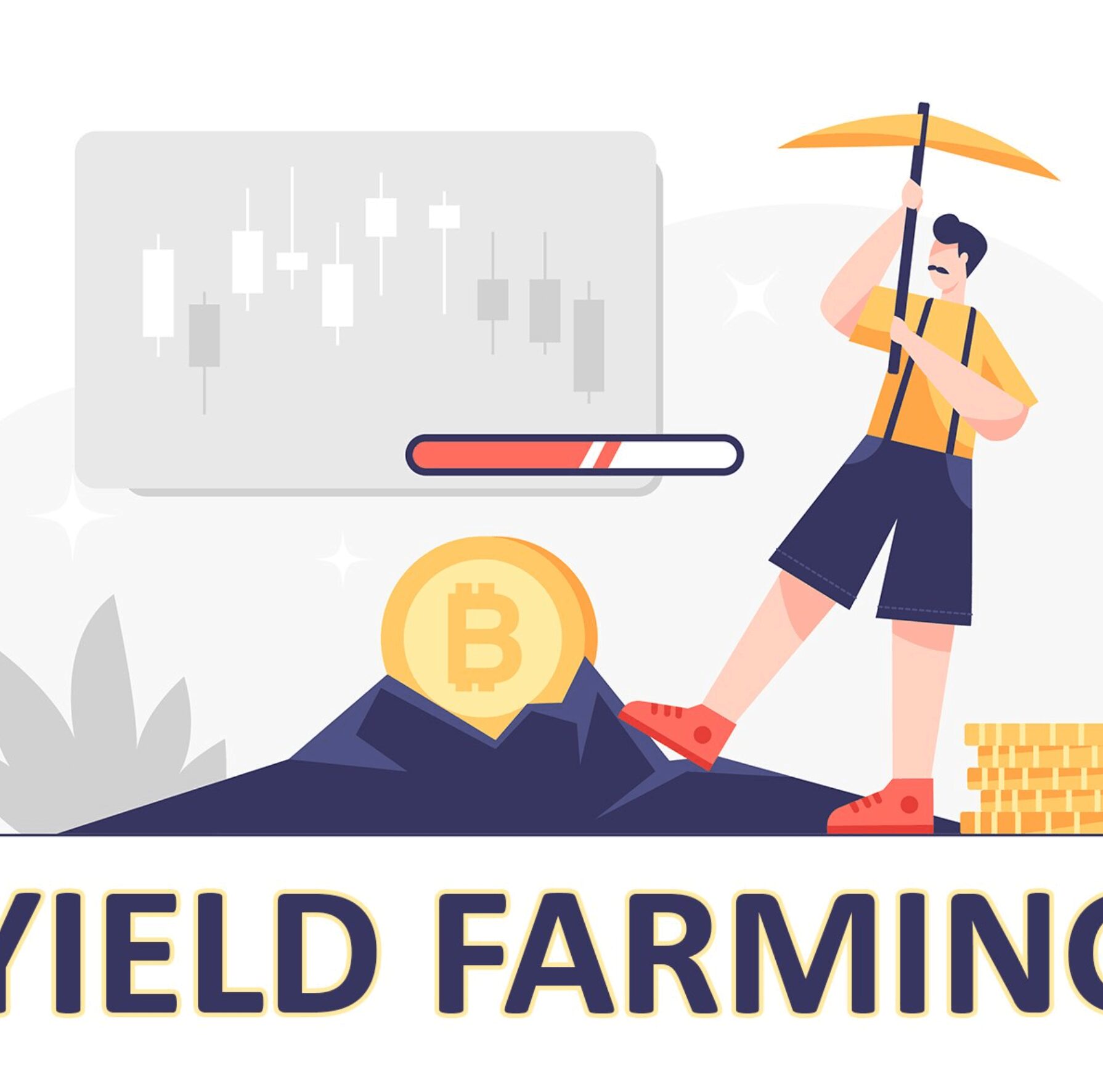Traditional banks invest your deposited capital. These banks lend out your funds and, in return, pay you a small percentage of the interest they earn. However, the disadvantage is that the banks take a higher percentage of the earnings and pay you the rest. Imagine where you can cut off these banks and earn your rewards directly with a high percentage of your earnings. That is the idea behind yield farming in decentralized finance (DeFi).
In yield farming, you deposit your cryptocurrency assets into decentralized finance (DeFi) protocols, which leverage these assets to support critical blockchain ecosystem functions like lending, trading, and liquidity provision.
Unlike traditional banking models where institutions capture most returns, investors receive direct financial rewards through various compensation mechanisms, including interest payments, transaction fees, and additional token allocations.
Certain protocols present great opportunities, with annual percentage yields reaching impressive double-digit percentages, establishing yield farming as an attractive strategy for strategic cryptocurrency asset growth.
What is Yield Farming?

Yield farming represents an innovative approach to generating passive income within decentralized finance (DeFi) by strategically lending or staking cryptocurrency assets to earn various rewards.
Rather than allowing your crypto holdings or portfolio to remain inactive, you can deposit funds into liquidity pools across platforms like Uniswap, Aave, or Compound, where these assets support critical blockchain ecosystem functions including lending, trading, and borrowing.
In exchange, participants receive compensation through interest payments, transaction fees, or governance tokens.
While this strategy is somewhat similar to traditional bank deposits, there is a dynamic twist—instead of a fixed interest rate, potential earnings fluctuate based on complex interactions of supply, demand, and platform-specific incentive structures.
The Annual Percentage Yield (APY) can significantly outperform conventional banking returns, with some opportunities presenting double-digit returns that challenge traditional investment paradigms.
The yield farming mechanism predominantly involves liquidity provider (LP) tokens, which serve as digital representations of an investor’s stake within a liquidity pool. These versatile tokens enable sophisticated strategies to compound earnings across multiple platforms, potentially amplifying overall investment returns.
Scenario 1
For each $1000 you invest in a bank, the majority of US banks, for instance, can guarantee about $1 per year. To put this in context and get you pumped, several well-known yield farming opportunities in DeFi are offering $3000 per year for every $1000 invested. But the question is, how is it generating this much?
How it Works
- Providing Liquidity: Cryptocurrency investors deposit their digital assets into liquidity pools on decentralized finance platforms. On exchanges like Uniswap or SushiSwap, users contribute equal proportions of two distinct tokens to these pools, facilitating seamless decentralized trading mechanisms.
- Earning Rewards: As compensation for supplying critical liquidity, participants receive financial incentives, typically including a percentage of transaction fees generated by the pool or additional platform-issued tokens.
- Staking LP Tokens: Platforms issue Liquidity Provider (LP) tokens as verifiable proof of a user’s pool contribution. These tokens can be further staked in yield farming protocols, enabling sophisticated strategies to compound potential investment returns.
Recent Examples:
- Uniswap: A prominent decentralized exchange where users provide liquidity across various token pairs, earning proportional shares of platform-generated trading fees.
- Aave: A decentralized lending protocol allowing users to deposit assets and support loan liquidity, receiving interest payments and potential supplementary token rewards.
Key Components of Yield Farming
Yield farming functions through a sophisticated network of interconnected components that empower users to generate returns on their cryptocurrency holdings. These elements collaborate to construct a decentralized financial infrastructure enabling asset lending, borrowing, and trading.
- Liquidity Pools: These are sophisticated smart contract-based reserves where users deposit tokens to facilitate decentralized financial transactions. Prominent platforms like Uniswap, Curve, and SushiSwap depend on these pools to ensure fluid and efficient market operations.
- Liquidity Providers (LPs): cryptocurrency investors who contribute assets to liquidity pools, receiving rewards for their participation. Participants are issued LP tokens representing their proportional pool stake, which can potentially be staked across multiple platforms to maximize earnings.
- Smart Contracts: automated, self-executing programs that process transactions without intermediary intervention. Yield farming fundamentally relies on these contracts to manage liquidity pools and distribute rewards with precision and transparency.
- Governance Tokens: Many decentralized finance platforms issue native tokens (such as UNI, AAVE, or SUSHI) to liquidity providers as strategic incentives. These tokens grant holders meaningful voting rights in platform governance and decision-making processes.
- Annual Percentage Yield (APY): A critical metric quantifying potential investment returns, incorporating compound interest calculations that enable farmers to evaluate and select the most profitable strategic approaches.
Popular Yield Farming Strategies
Yield farming strategies vary based on risk tolerance, expected returns, and market conditions. Here are some of the most common and effective yield farming strategies used by DeFi investors:
| Yield Farming Strategy | How it Works |
| Liquidity Provision (Earning Trading Fees) | 1. Investors deposit token pairs (such as ETH/USDT) into a designated liquidity pool. 2. These pooled assets enable seamless token swaps for market participants seeking to execute trades. 3. Contributing investors receive LP tokens as digital proof of their proportional ownership stake in the pool. 4. Liquidity providers earn proportional shares of trading fees generated through pool transactions (for instance, 0.3% per trade executed on Uniswap). |
| Yield Aggregation (Auto-Compounding Profits) | 1. Investors allocate capital into specialized vaults engineered to automatically harvest yields across diverse DeFi platforms. 2. The platform generates rewards by strategically redeploying them into optimal yield strategies, enhancing overall APY. 3. This automation eliminates manual reinvestment requirements and optimizes returns through algorithmic efficiency. |
| Lending and Borrowing (Interest Earnings & leveraged Yield Farming) | 1. Users can lend cryptocurrency assets through decentralized finance platforms, generating interest from their capital. 2. Borrowers can access loans by using their crypto holdings as collateral and providing interest payments to lending participants. 3. Users can borrow stablecoins against their deposited crypto assets, turning this capital into high-yield strategies for more returns |
| Staking (Passive Income with Governance Token) | 1. Users stake tokens in a DeFi protocol. 2. They receive staking rewards, usually paid out in additional tokens. 3. Some platforms offer auto-staking, where rewards are compounded automatically. |
Conclusion
It is important that you do rigorous, thorough research, maintain strategic diversification, and select established platforms to reduce risk exposure. Technological advancements like automated yield aggregators and cross-chain farming continue to develop, enhancing accessibility and operational efficiency.
As the DeFi ecosystem matures, yield farming remains positioned as a fundamental strategy for investors seeking returns beyond traditional financial frameworks. However, prudent risk management remains critical—investors should limit exposure to acceptable loss levels and maintain current knowledge of industry developments and security protocols.
When approached strategically, yield farming presents opportunities to grow your crypto holdings while participating in the ongoing evolution of decentralized finance.






